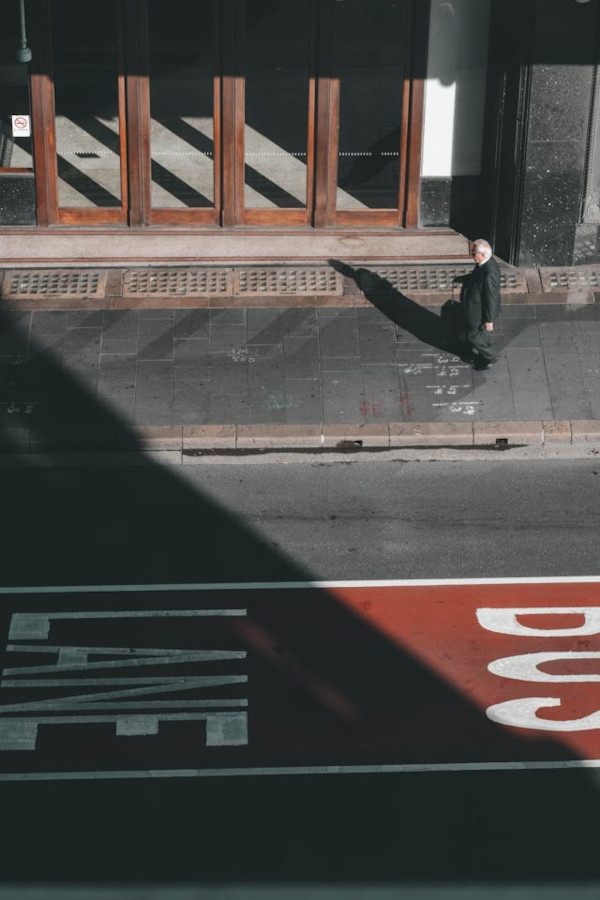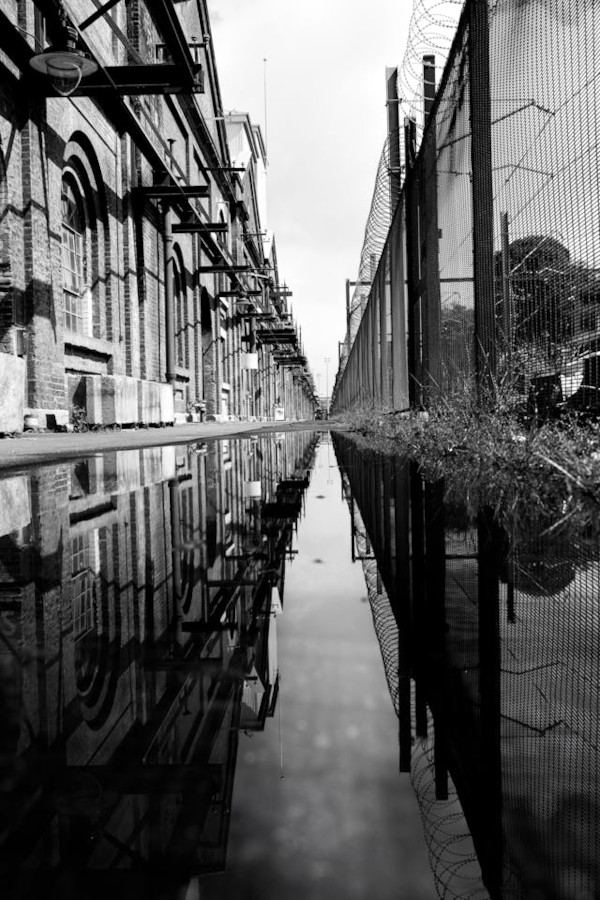How do I become a good street photographer?
The best street photographers have the skills to freeze the fleeting moments that happen all around them, on everyday streets. It's a challenging yet rewarding art form. This street photography guide from the team at DCW unpacks everything you need to know about street photography, from what it is to the ideal camera equipment. They even provide us with some expert tips to take your street photography to the next level.
Before you get to work on your street photography portfolio, you may be wondering, Why is street photography so fun? Those with experience will say that it's the thrill of the unexpected, the visual storytelling, and the constant rediscovery of a city - whether it's a familiar, or one they've never set foot in before.
Ready to embark on your street photography journey? Let's begin.
.jpg)
What is street photography?
Street photography documents the candid moments, interactions, and human stories that unfold in public spaces. Mastering how to do street photography requires a keen eye for composition, an understanding of light and shadow, and a sense of timing to capture ‘the decisive moment’, which is a phrase used by one of the most successful street photographers of all time, Henri Cartier-Bresson.
Why is street photography often black and white? Put simply, it evokes a sense of timelessness. By removing colour, the photographer can emphasise lines, shapes, and textures, drawing the viewer's attention to the emotional core of the scene. It also helps the viewer to see the scene differently than they would daily. That said, as with any art form, street photography rules are made to be broken, so feel free to shoot in colour when you hit the streets.

The best equipment for street photography
Once again, there are no hard and fast rules about what equipment you need to use on the streets; you can even attempt street photography with your iPhone. Still, there are certain qualities that you want your street photography kit to have if you want to be successful.
In terms of a camera, we recommend something that is both portable and powerful; it’s the perfect opportunity to invest in that mirrorless camera system that you have been eyeing.
Portability is important for street photographers, as it is a project that requires long periods of walking around with your camera gear, patiently waiting for the perfect photo opportunity to arise. You also need relatively discrete equipment if you want your street images to achieve that candid, fly-on-the-wall look that the masters are so good at.
You require your street photography camera to offer lightning-fast responsiveness, premium image quality, and extensive manual controls, empowering you to make adjustments in the blink of an eye.
When it comes to choosing a street photography camera lens, prime lenses are king, thanks to their portability, exceptional optical quality, and large aperture. This is great for creating beautiful bokeh and the ability to work in low-light conditions. There is a great debate among photographers as to which lens is best for street photography, with 35mm, 50mm and 80mm being a few popular options.
If you don’t think you are quite ready for interchangeable lens camera gear, there are a select few digital compact cameras that are perfectly suited to street photography. Consider the following retro-themed options:
Ricoh GR IV: The original Ricoh GR was a point-and-shoot film camera that was a hit due to being stealth-like and pocketable while delivering brilliant optical quality and simple operation. The GR IV digital continues this legacy with modern features available to keep in touch with the crowd.
Street Photography Settings to Explore
When it comes to knowing what settings to use on your digital camera, it's worth noting that we can only offer a starting point. As lighting changes or you desire a different look in your photographs, you will have to tweak the key settings of the exposure triangle accordingly.
Experiment with different settings to find what works best for your style and the specific shooting conditions.
What Shooting Mode to use for street photography? Manual mode always provides the most flexibility. If you are not ready for this step yet, use aperture priority mode; this means you adjust the aperture and the camera does the rest for you.
What is the best aperture for street photography? Many street photographers wish to create images with a larger depth of field, that is, an image where more of the details are in focus. For this look, go for an aperture of f8 to f11.
What shutter speed to use for sharp street photography? It's tricky to use a tripod amidst the hustle and bustle of the streets. For this reason, you must use a shutter speed that is fast enough to negate camera shake. A good starting point is around 1/125 of a second or faster, although this can be pushed lower when using a modern digital camera with image stabilisation.
What ISO should you use for street photography? ISO is a setting that should be adjusted in accordance with the current lighting conditions and the other settings of your camera. Start at a moderate ISO of around 400 and raise or lower it as necessary, in order to get a good exposure using your desired shutter speed and aperture.
Other street photography settings to consider:
Focus mode: This is a personal preference. To track moving subjects, consider using AF-C, which is continuous autofocus. Traditional street photographers swear by manual focus, and they employ a technique called zone focusing; this involves setting your lens to a predetermined focal point and candidly capturing an image when you judge your subject to be in focus.
Continuous shooting: Gone are the days of having to consider every frame, which was common in the heyday of film photography. With a digital camera, continuous shooting allows you to fire off multiple shots of a subject, choosing your best image later on.
White balance: This refers to how your camera handles white objects in your photos. Like a puzzle, if you get this setting right, all of your other colours fall into place. Auto mode is generally successful on modern cameras, but you can also learn how to set custom white balance if you want to leave nothing to chance.
RAW file format: Serious photographers should always consider capturing their images in the RAW file format. Not only does it capture the highest quality, uncompressed file, but it also allows you to tweak other settings with greater success when it comes to editing your image for sharing or printing.

Street photography tips
Everyday scenes hold hidden stories. Unleash your inner street photographer with these helpful tips.
• Street photography for beginners: Although we have provided a list of the best street photography gear, you shouldn’t hesitate to start with what you have! A phone camera or a point-and-shoot can be perfect for capturing the essence of street life.
• Embrace the journey: Don’t just stick to the main streets. Get out there and explore your surroundings. The best photos often appear when and where you least expect them.
• Do I need permission for street photography? Laws vary by location, but generally, capturing photos in public spaces is okay. However, be respectful of privacy. If someone seems uncomfortable, avoid photographing them.
• Street photography without people: This can create an eerie feeling. Focus on architectural details, patterns, reflections, or interesting juxtapositions of objects. Play with light, shadows, and textures to create a unique visual story.
Top Tip: Be an early riser and hit the streets before it gets crowded with other city goers.
• Carefully compose your shots: Use the rule of thirds or leading lines to draw the viewer's eye into your photo.
• Always be ready: Be observant and ready to react quickly to fleeting moments, even if it's not people-focused.
• Practice makes perfect: The more you shoot, the more comfortable you'll become with your camera and capturing the energy of the streets. So get out there and have fun!
